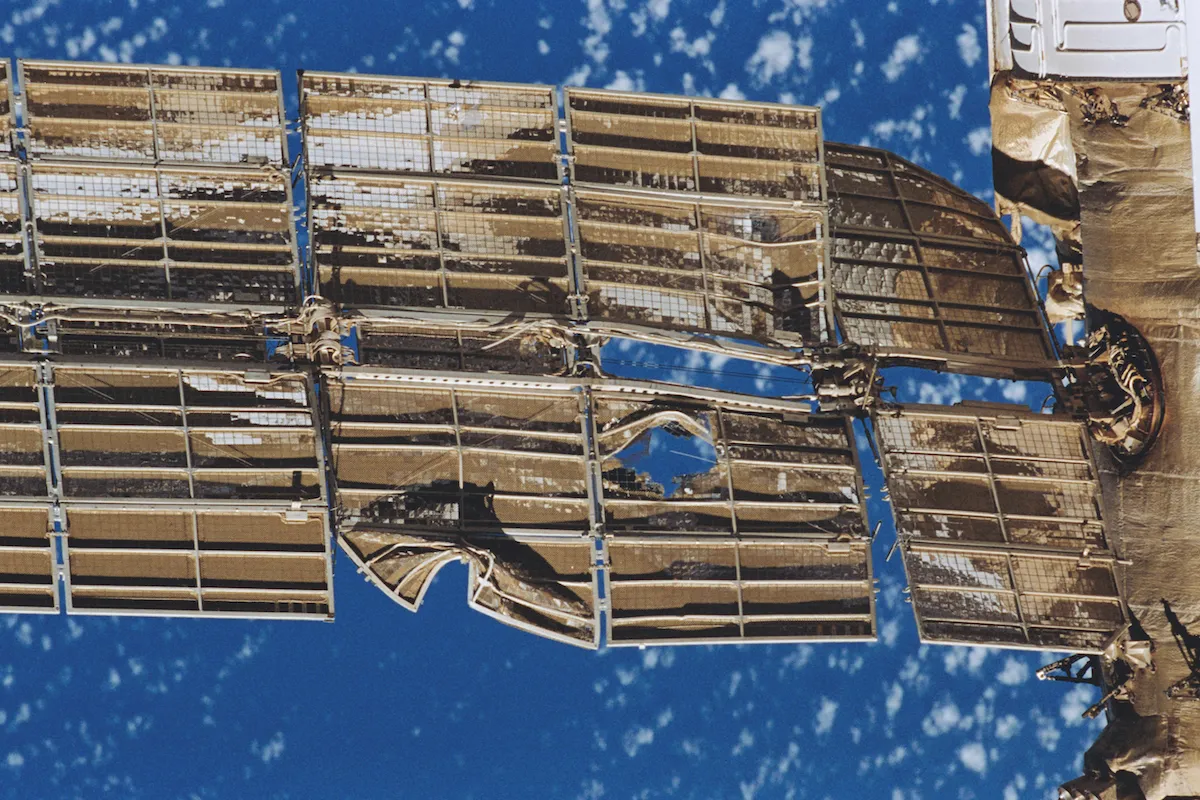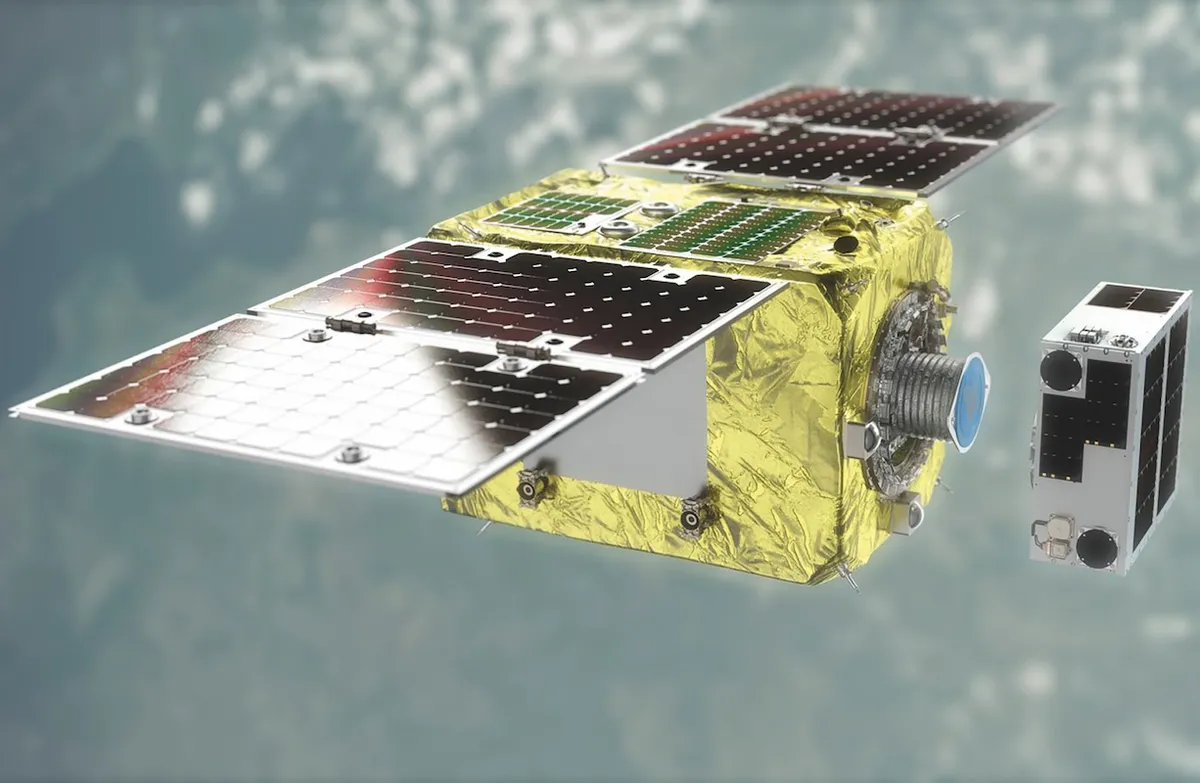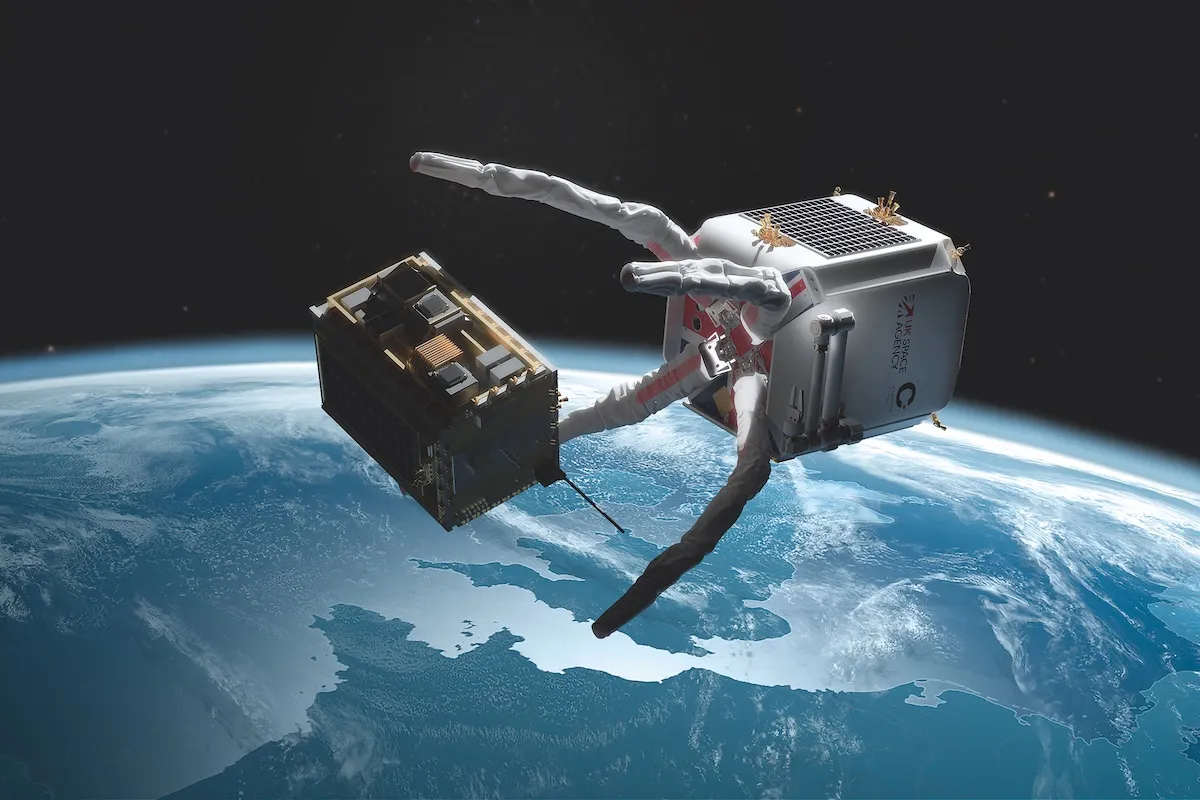We used to think of Earth and the night sky as completely different realms. Whereas Earth is lush, green and filled with life, outer space is remote, dark and forbidding. Now we know that is simply not true. Instead of outer space, we should think of it as near space.
As British astronomer Fred Hoyle (1915-2001) was quoted as saying in a 1979 edition of The Observer: “Space isn’t remote at all. It’s only an hour’s drive away if your car could go straight upwards.”
Our use of satellites for communications, navigation and observation has tied Earth and space together as never before. It’s no exaggeration to say that society as we know it could not function without the satellite networks that circle the planet.
Something approaching half of the 195 countries in the world now own at least one satellite. As a result, what happens in space inevitably influences what happens on Earth, and vice versa. Space has become an extension of Earth’s environment, a new frontier where human influence is felt.
It’s therefore essential that we understand the limits of this new environment and its resources to ensure that our current activities are sustainable, so that future generations can continue to benefit from the unique opportunities that space offers.
A change of approach
“I do think we’re at a juncture where we need to review what we’ve been doing in space and consider what’s needed for the future,” says Joanne Wheeler, managing partner at the London-based law firm Alden Legal, which specialises in satellite, space and communications law.
Wheeler has a background in space law and international environmental law, and has been interested in space debris for around 25 years, having once been the European Space Agency’s main lawyer covering issues related to space debris.
Read more:
- From solar sails to hyperspace: Here’s the future of interstellar travel
- What altitude must satellites reach to stay permanently in orbit?
Her solution is the Earth & Space Sustainability Initiative (ESSI), a UK Space Agency-funded organisation to establish an appropriate set of principles to outline the responsible use of space, for the benefit of all.
But although the broad themes of the principles have been outlined the exact wording of them is still to be decided.
“We’re taking a holistic, practical, inclusive, multi-disciplinary and anticipatory approach,” says Wheeler.
In other words, ESSI will consult with the various industries, universities, governments and other organisations around the world that are interested in space to understand their ambitions, and work with them to draft the principles.

To kickstart the process, Wheeler and her team drafted a memorandum outlining the strands that the principles will focus on. Over three weeks in June, the document was sent far and wide into the worlds of academia and industry for comment, and redrafted several times to reflect the responses.
When the finished draft was circulated, more than 120 space organisations, including most of the principal satellite operators around the world signed the document.
“It was remarkable,” says Wheeler. “What an excellent way to kick-off the wide engagement we want in drafting the ESSI Space Sustainability Principles. It shows how important the issue is to all space players today.”
A design for life
While the principles will cover the entire lifecycle of a satellite, from design and manufacture to its eventual demise, the prevention of space debris is a running theme.
According to the European Space Agency (ESA), as of June 2023, 15,760 satellites have been placed into orbit since the beginning of the space age in 1957. Of these, 10,550 remain in space and 8,200 remain operational.
Low Earth Orbit (LEO), which extends from the top of Earth’s atmosphere to an altitude of 2,000km (almost 1,250 miles) is the most congested region. There are roughly 8,600 satellites here, not all of which are still operating.
There are 13,000 pieces of known debris in LEO too. These can be anything from parts of the rockets that put the spacecraft into orbit, to discarded camera covers. Not only do they get in the way of other satellites that we may wish to launch, they pose a collision risk to the working satellites they share space with.
Collisions in space are usually devastating because of the speeds involved. Satellites move at around 8km per second (approx 18,000mph). At those speeds, even a small screw can deliver the explosive equivalent of a hand grenade, creating clouds of debris with tens of thousands of fragments, each capable of shattering another satellite.
Unsurprisingly, the UK and others are working hard to avoid such scenarios.
“We’re investing heavily in both ESA and a number of national initiatives, which range from technology development for in-orbit operations, to design studies that are the first steps towards a national mission to capture and remove two pieces of UK-registered space junk,” says Ray Fielding, the UK Space Agency’s Head of Space Sustainability.
Read more:
- What are the chances of being hit by falling space junk?
- Does the debris around Earth affect the atmosphere?
ESSI is just one of those initiatives. But there are others that are dedicated to ‘active debris removal’ (ADR), which involves using specially designed spacecraft to capture defunct satellites and throw them back into Earth’s atmosphere, where they can burn up.
One of these ADR initiatives belongs to Astroscale, a Japanese company that now boasts a clean froom for satellite assembly in Harwell, Oxfordshire.
In March 2021, Astroscale launched ELSA-d, the End-of-Life Service by Astroscale demonstration. This mission consisted of twin spacecraft, a chaser and a target, and demonstrated the way one satellite could capture another using a magnetic arm.
For Nick Shave, the managing director of Astroscale’s UK office, solving this problem is about securing the future.
“Our strong dependence on space is only going to continue. On our quest to go out into the Solar System, to the Moon first and then Mars, we need to be managing that environment much better,” he says.

ClearSpace is another company dedicated to removing space debris. Founded in Switzerland but now building a facility in London, it will launch the ClearSpace-1 mission with ESA and Arianespace in 2026. This will be the world’s first actual ADR mission and will remove a piece of a previous Ariane launcher.
“Winning that contract supercharged us as a company into what we are now,” says Rory Holmes, of ClearSpace. “The UK is now our biggest engineering centre outside of Switzerland.”
The ClearSpace design features long robotic arms that close around a defunct satellite, holding it while it’s fixed, refuelled or removed from orbit.

Both companies are now in a race to win a UK Space Agency contract to remove two more pieces of actual space debris.
More satellites, more problems
The urgency to clean up space has increased with the advent of the so-called satellite mega-constellations. There are proposed fleets of thousands or even tens of thousands of satellites designed to supply high-speed internet from orbit to everywhere on the planet.
Elon Musk’s SpaceX-Starlink project is the most high-profile example. As of June 2023, Starlink owns the largest number of satellites in orbit at more than 4,000.
And that number is growing all the time. Other companies, such as OneWeb, are launching their own constellations, and Amazon plans to do the same with its Project Kuiper. If everything goes according to plan, more satellites will be launched in the next 10 years than in the entire space age to date.
Clearly such a dramatic increase in the number of satellites and the associated debris is unsustainable. Not only must we remove debris from orbit, but we must also design future satellites to not produce so much in the first place. One option for doing this is to design them to be refuelled and/or serviced, so that their working lives can be extended.
“Can you imagine any other industry where you’d have such an expensive infrastructure you’ve invested all this time and money in, but you have no way of servicing it, no way of refuelling it? If it breaks, you leave it; when it reaches the end of its life, you abandon it. That has to change. There’s so much potential value that could be unlocked if we can master servicing satellites,” says Holmes.
Short-term v long-term concerns
Ultimately, of course, it’s in every space company’s long-term interest to make sure that the orbits around Earth are safe for their satellites to operate in. But Shave has no illusions about other, shorter-term concerns: “Business is always based on generating revenues and, at the end of the day, profits for shareholders.”
He thinks about a decision to either pay £X million to perform a clean-up mission, or use that money to buy a ground station for the company. From a short-term profitability point of view, the ground station would always win so what’s going to drive that decision towards the sustainability option?
“There’s goodwill,” says Shave. “But I think the real thing that’s going to drive this market is regulation.”
In plain terms, companies must be compelled to clean up their mess. Yet if this option is the stick, then perhaps Wheeler has come up with something akin to the carrot.
“Four years ago, I began thinking about how best to incentivise ‘good’ behaviour and what good behaviour actually is,” she says of the seed of the idea that has grown to become ESSI.
“I was keen to link this to insurance and finance, and licensing requirements because I hadn’t seen space sustainability issues linked in this way.”
Her thinking was influenced by the fact that it’s becoming increasingly common for financing and insurance on Earth to be linked to a company’s commitment to sustainability, so why not in space too?
Time will tell if the approach is as successful, but negotiations have already started over how to turn ESSI’s Space Sustainability Principles into internationally recognised industrial standards, so that companies can be measured against them.
In the meantime, we stand on a watershed in history: never before have we possessed the means or the motive to launch so many satellites and use them in such a wide variety of ways to benefit life on Earth.
While the cultural, scientific, engineering and economic benefits of using space are unquestionable, they must be balanced against the inevitable environmental and, subsequently, human cost.
The ESSI's Principles for sustainability
1: Spacecraft design and manufacture
How can manufacturers ensure safer satellites that use fewer resources to build, and minimise their impact on the space above Earth?
2: Launch and propulsion
How can satellite launches be made safer and how can rocket fuels be made greener to minimise environmental impacts?
3: Supporting operations in space and spectrum sustainability
How can space traffic be more effectively managed and controlled? Similarly, how can the limited amount of radio frequencies be used most effectively to maintain communication with the ground?
4: Rendezvous and proximity operations
How can we safely rendezvous with existing satellites to either remove them from orbit, or refuel them so they can continue their missions?
5: Supporting ‘end of life’ and disposal
How can satellites best be disposed of and what are the environmental impacts of space hardware re-entering Earth’s atmosphere?
6: Space debris mitigation
How can satellites be designed to minimise the possibility of them becoming, or otherwise creating, space debris during or at the end of their functional lives?
7: Dark and quiet skies
How can we minimise the visual trails across the night sky and the radio frequency interference from satellites for both cultural and scientific reasons?
8: Earth monitoring
How can we best monitor Earth to ensure adherence to environmental regulations, and also monitor space weather to warn against adverse effects to satellites?
9: Resource Management
How can we make the best use of planetary resources and protect neighbouring worlds from biological contamination?
About our experts
Joanne Wheeler is a managing partner at the London-based law firm Alden Legal, which specialises in satellite, space and communications law. She previously worked for the European Space Agency specialising in work on space debris.
Ray Fielding is the UK Space Agency’s Head of Space Sustainability. He has a background in materials engineering and has worked in the space sector for more than 30 years.
Rory Holmes is the managing director of ClearSpace UK. He has more than 15 years' experience, working in both manufacturing and operations. He holds a Master of Physics degree from Oxford University, and a PhD from the University of Heidelberg
Nick Shave is the managing director of Astroscale’s UK. He holds a Masters in Spacecraft Technology & Satellite Communications from University College London and is a Fellow of the Royal Aeronautical Society.
Read more: